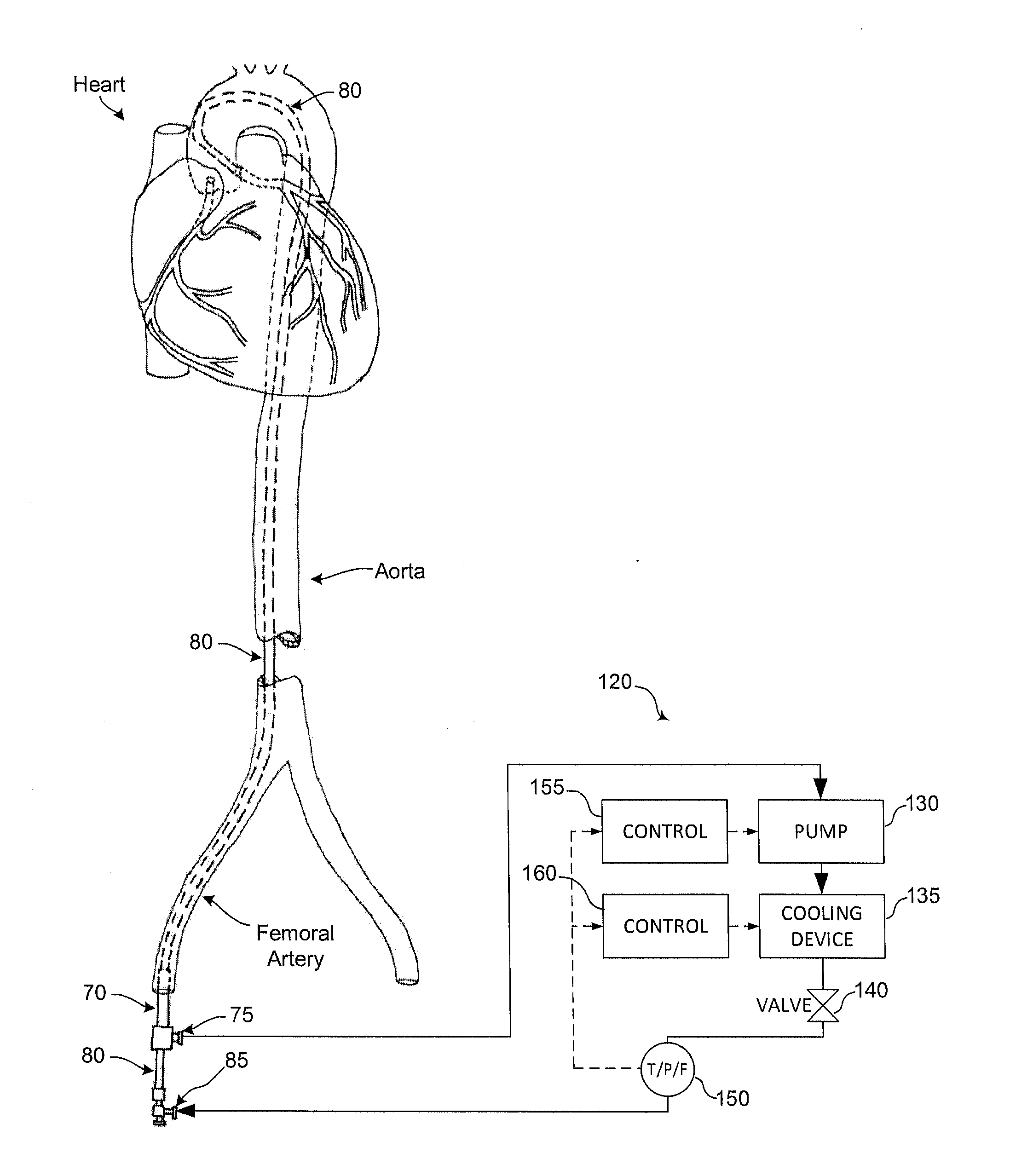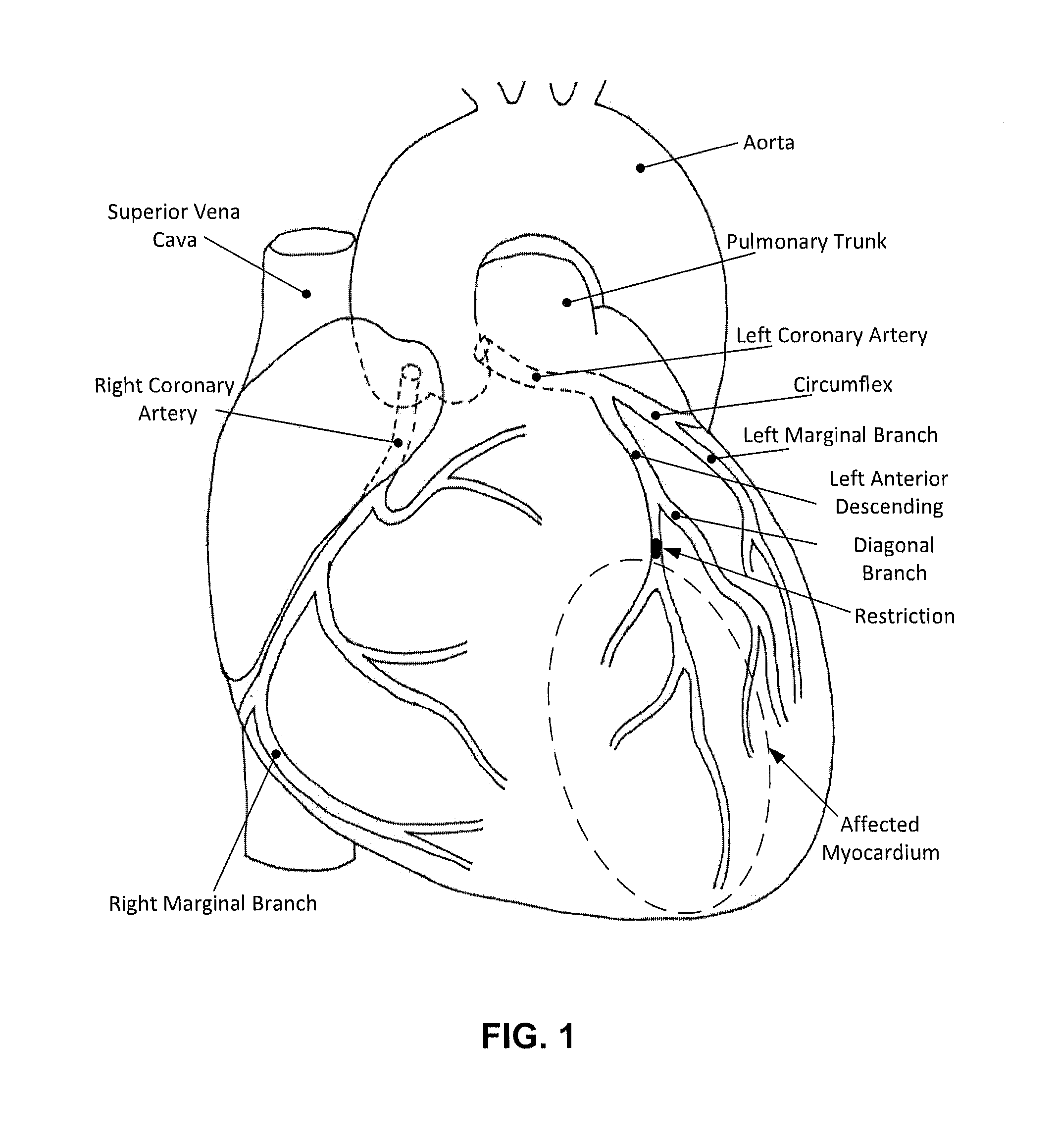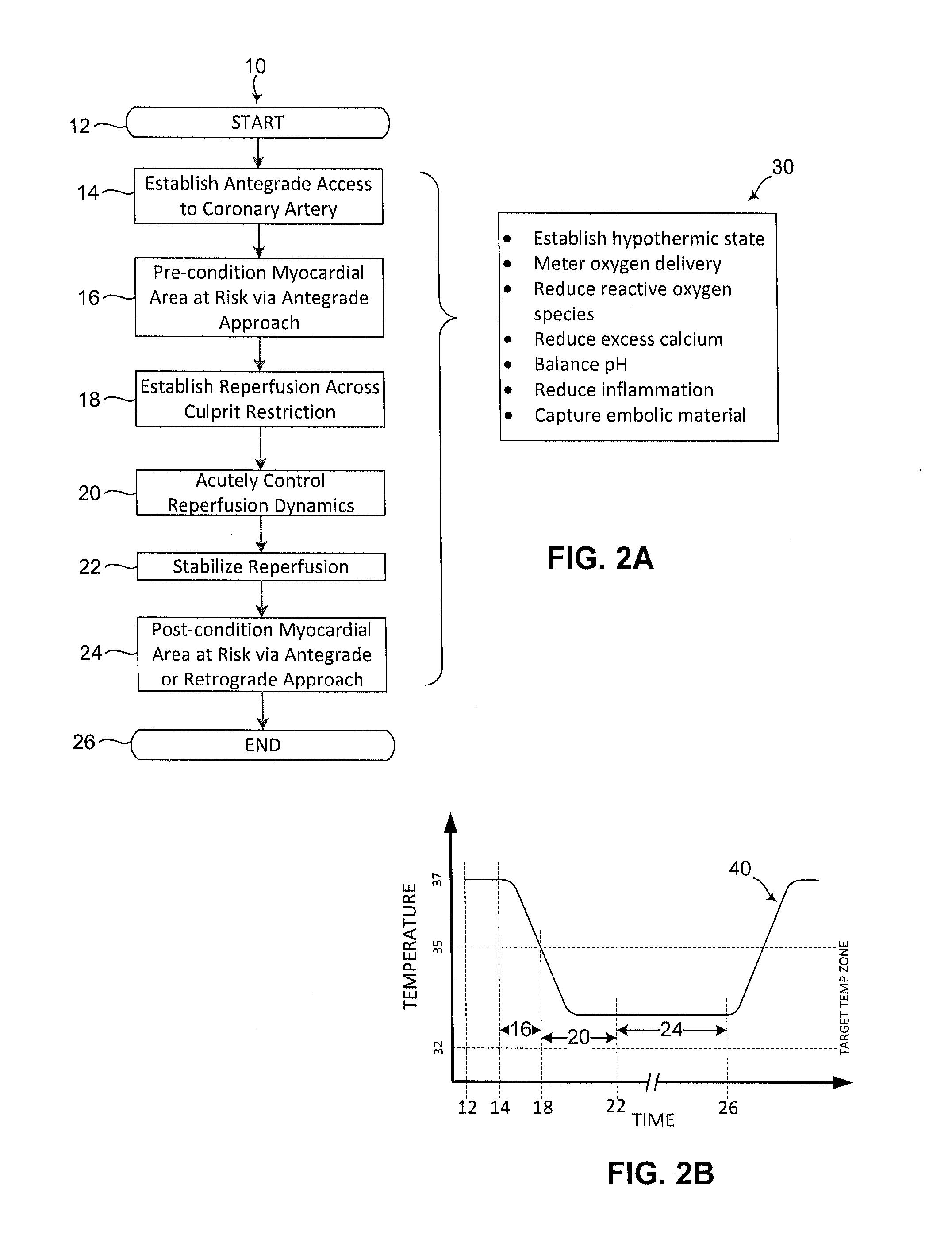Devices and methods to reduce myocardial reperfusion injury
a technology of myocardial reperfusion and device, applied in the field of devices and methods to reduce myocardial reperfusion injury, can solve the problems of eluded practical solutions and significant practical challenges, and achieve the effect of increasing the door-to-balloon time and reducing the time to reperfusion
- Summary
- Abstract
- Description
- Claims
- Application Information
AI Technical Summary
Benefits of technology
Problems solved by technology
Method used
Image
Examples
Embodiment Construction
[0034]With reference to FIG. 1, an anterior view of a human heart is shown. The heart includes two main coronary arteries: the right coronary and the left coronary artery. The right coronary artery generally provides oxygenated blood to the myocardium of the right atrium and ventricle, and the left coronary artery generally provides oxygenated blood to the myocardium of the left atrium and ventricle. Major branches of the right coronary artery include the right marginal branch, and major branches of the left coronary artery include the left anterior descending, the circumflex, the left marginal (branch of circumflex), and the left diagonal (branch of left anterior descending). Patients with ST elevation myocardial infarction (STEMI) often have a restriction in the left anterior descending artery affecting the downstream myocardium as shown. Although the present invention is described with reference to this presentation of STEMI, the principles of the present invention may be applied...
PUM
 Login to View More
Login to View More Abstract
Description
Claims
Application Information
 Login to View More
Login to View More - R&D
- Intellectual Property
- Life Sciences
- Materials
- Tech Scout
- Unparalleled Data Quality
- Higher Quality Content
- 60% Fewer Hallucinations
Browse by: Latest US Patents, China's latest patents, Technical Efficacy Thesaurus, Application Domain, Technology Topic, Popular Technical Reports.
© 2025 PatSnap. All rights reserved.Legal|Privacy policy|Modern Slavery Act Transparency Statement|Sitemap|About US| Contact US: help@patsnap.com



